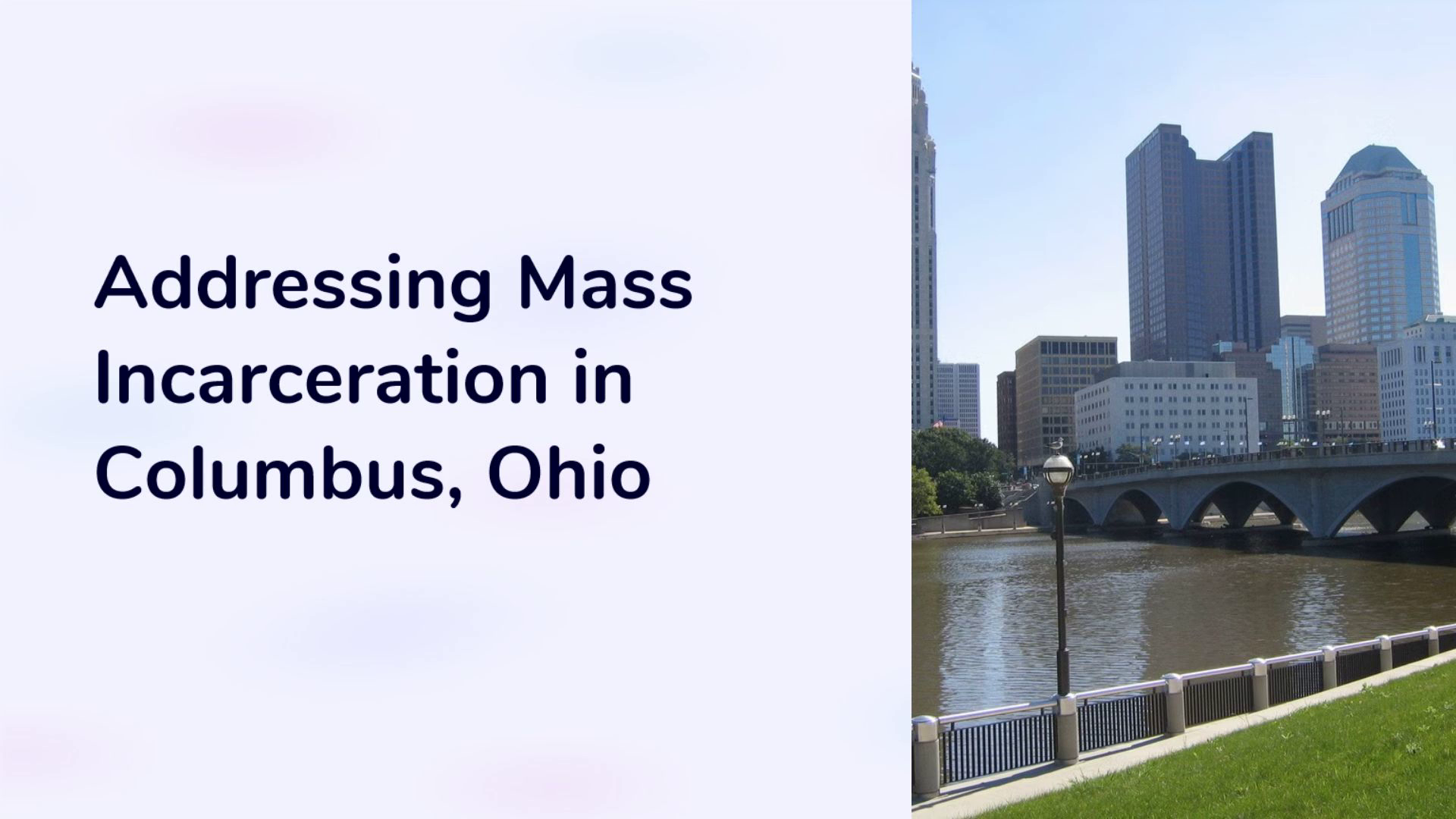
Addressing Mass Incarceration in Columbus, Oh
Scene 1 (0s)
Good morning everyone, Thank you for joining me today to discuss addressing mass incarceration in Columbus, Ohio. This PowerPoint presentation will provide an overview of the issue, highlight problem-solving techniques used, and present the final solution for implementation.
Scene 2 (16s)
In Columbus, Ohio, the pressing issue of incarceration has reached significant levels. Columbus has witnessed a substantial increase in its jail population, primarily attributed to the strain on the criminal justice system and the detrimental impact it has on communities.
Scene 3 (35s)
Factors consisting of sentencing practices, disparities inside the justice machine, and restrained access to alternative programs have all contributed to the considerable problem of mass incarceration in Columbus.
Scene 4 (51s)
Defining the problem statement is crucial for effective problem-solving. Various approaches, including paraphrasing, 180-degree Turn, Broadening the Focus, and Why Ask Why" Approach, were used to refine the problem statement.
Scene 5 (1m 10s)
Divergent thinking was employed to generate potential solutions to address mass incarceration, including the need for comprehensive criminal justice reform, restorative justice practices, community alternatives to incarceration, and support services such as job training and rehabilitation programs.
Scene 6 (1m 31s)
Convergent thinking involves carefully evaluating and refining the potential solutions generated through divergent thinking. Strategies such as restorative justice practices, innovative educational programs for inmates, and legislative advocacy to rectify sentencing disparities are essential remedies for mitigating mass incarceration.
Scene 7 (1m 55s)
A devil's Advocate approach was applied after the convergent thinking phase. This method involves questioning the three proposed solutions from a contrasting perspective to examine and reinforce the ideas under discussion.
Scene 8 (2m 23s)
The weighted ranking assessed the three primary strategies for addressing incarceration. As a result, restorative justice practices were ranked the highest and selected as the final solution to address mass incarceration in Columbus, Ohio.
Scene 9 (2m 44s)
Restorative justice practices were implemented using the PDPC. It addressed steps and risks and included contingencies to enhance success. The PDPC concluded by assessing countermeasures as probable (0) or improbable (x) for optimized outcomes.
Scene 10 (3m 4s)
We carefully considered the potential impact on people, communities, and society in our problem-solving process. Our chosen solution aligns with fairness, justice, and human rights values. While no issues were identified, we remain vigilant for new ethical matters during implementation.
Scene 11 (3m 26s)
To evaluate and sustain a restorative justice program, ongoing evaluation is crucial to measure effectiveness and outcomes. Securing sustainable funding, maintaining community engagement, and advocating for supportive policies are essential for long-term success.
Scene 12 (3m 56s)
Urgent attention is needed to address over-incarceration in Columbus. A restorative justice solution has emerged, leveraging careful analysis, innovative thinking, stakeholder involvement, and ethical considerations. Effective execution, ongoing assessment, and sustained progress are vital for long-term success in mitigating the harmful effects of over-incarceration.
Scene 13 (4m 21s)
Thank you for your time. I hope this presentation provided valuable insights into addressing mass incarceration. I invite you to engage in open discussion, ask questions, or share your thoughts on the topic. Your input is greatly appreciated.